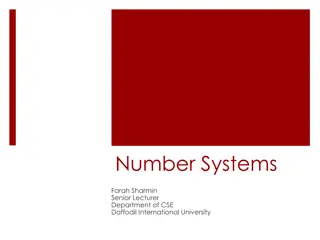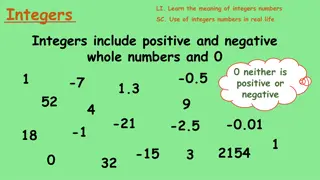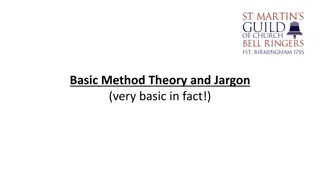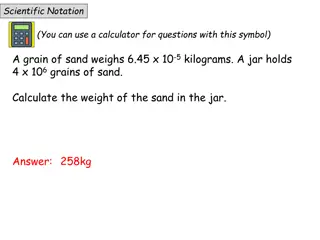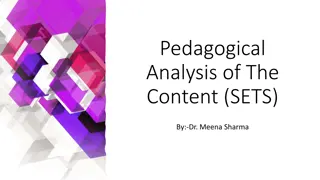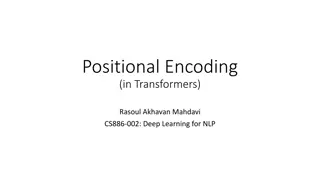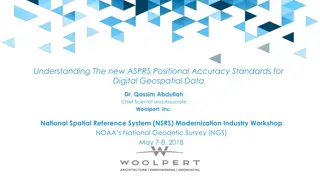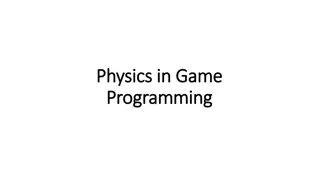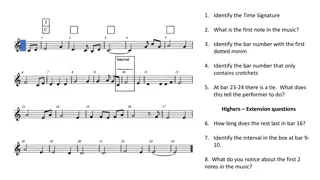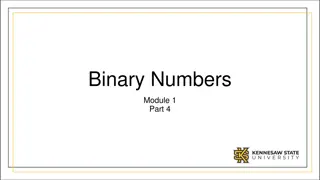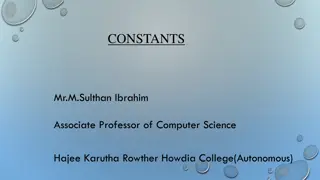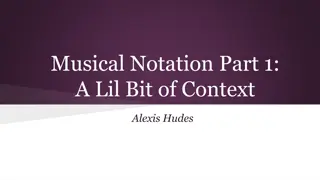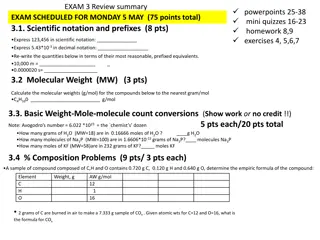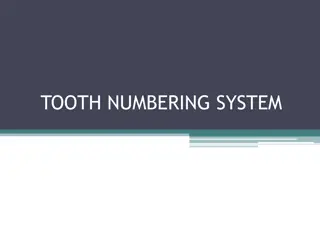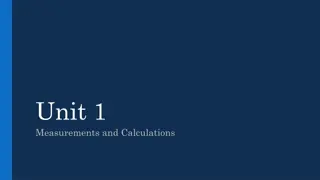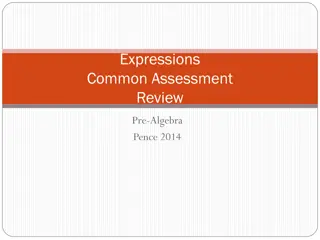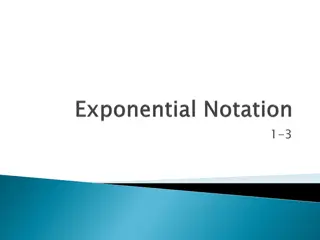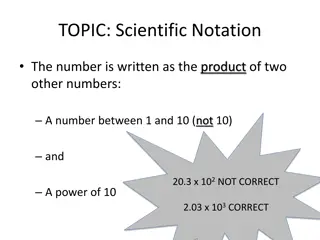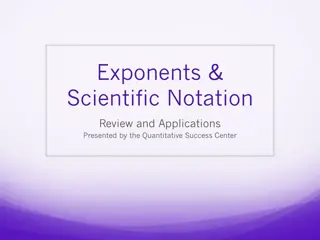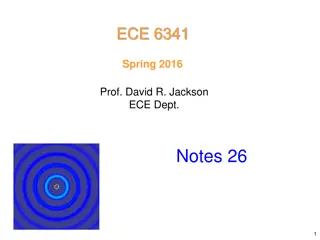Five Dimensions to Our Spiritual Authority
Explore the five dimensions of spiritual authority - Redemptive, Inherited, Positional, Delegated, and Empowered authority - outlined in the context of Christ's triumph and our identity as children and heirs of God. Scriptures from Romans 8:16-17 and Galatians 4:6-7 emphasize our position as joint h
0 views • 20 slides
Understanding Number Systems and Their Characteristics
Dive into the world of number systems, exploring non-positional and positional systems. Learn about the unique features of each system, including the use of symbols and digits, as well as how to convert numbers between different bases. Discover the Decimal Number System and its significance in every
2 views • 33 slides
Understanding Integers: Real-life Applications and Examples
Explore the world of integers, encompassing both positive and negative whole numbers along with zero. Discover practical instances where integers are encountered, such as temperature readings, financial transactions, and positional indicators like floors in a building. Dive into scenarios where nega
0 views • 34 slides
Introduction to Basic Music Theory Concepts and Notation
Delve into the fundamental elements of music theory, exploring notation, scales, and chord progressions through visual representations. Learn how to read and interpret musical symbols, paving the way for a deeper understanding of music composition.
2 views • 13 slides
Mathematics Practice Problems - Fractions, Percentages, Scientific Notation, and Expanding Brackets
Practice various mathematics topics such as fractions, percentages, scientific notation, and expanding brackets with sample problems and solutions.
0 views • 66 slides
Dakin Rearrangement in Organic Chemistry: Mechanism and Positional Effects
The Dakin Rearrangement, also known as Dakin oxidation, is an organic redox reaction involving hydroxylated phenyl aldehydes or ketones reacting with hydrogen peroxide to form benzenediols and carboxylates. The mechanism includes nucleophilic addition, [1,2]-aryl migration, and final product formati
1 views • 9 slides
Pedagogical Analysis of Sets in Mathematics: Key Concepts and Teaching Strategies
Explore the pedagogical analysis of SETS by Dr. Meena Sharma, focusing on major concepts like the meaning of SET, SET notation, classification of SETS, and fundamental operations. Understand minor topics such as examples of sets, SET notation methods, and types of SETS. Objectives include defining S
0 views • 8 slides
Understanding Positional Encoding in Transformers for Deep Learning in NLP
This presentation delves into the significance and methods of implementing positional encoding in Transformers for natural language processing tasks. It discusses the challenges faced by recurrent networks, introduces approaches like linear position assignment and sinusoidal/cosinusoidal positional
0 views • 15 slides
Evolution of ASPRS Positional Accuracy Standards for Geospatial Data
New technological advancements have prompted the need for updated ASPRS positional accuracy standards for digital geospatial data. Legacy standards from the 1990s are no longer sufficient given the shift towards modern mapping technologies. The new era of mapping involves factors like camera calibra
0 views • 21 slides
Understanding Post-Dural Puncture Headache in Children
Post-dural puncture headache (PDPH) is a common complication following lumbar puncture, characterized by a positional headache that worsens when upright and improves when lying flat. This article discusses the epidemiology, etiology, diagnosis, risk factors, management, and treatment of PDPH in chil
0 views • 30 slides
Understanding Enemark-Feltham Notation in Iron-Nitrosyl Complexes
Iron-Nitrosyl complexes are redox non-innocent, with NO exhibiting multiple redox states. Enemark-Feltham Notation helps in determining metal-ligand interactions and oxidation states. Detailed information on NO ligands, bonding characteristics, and methods for analyzing iron-NO systems are discussed
0 views • 6 slides
Math Set Notations and Probability Practice
Practice set notation and probability with quizzes on set notation, Venn diagrams, and probability calculations based on survey results. Improve your math skills through visual exercises and calculations.
0 views • 19 slides
Understanding Vectors and Velocity in Physics and Game Programming
Exploring the concepts of vectors, velocity, and positional vectors in both physics and game programming. Learn about key properties, conversion formulas, and the application of velocity vectors to positional vectors using examples and visual representations.
1 views • 32 slides
Understanding IP Addressing and Conversion from Binary to Decimal
Learn about IP addressing, including binary notation, dotted-decimal notation, and the process of converting binary numbers to decimal. Explore the unique features of IP addresses and the steps involved in converting binary to decimal systematically.
3 views • 47 slides
Efficient Voting via Top-k Elicitation Scheme: A Probabilistic Approach
This work presents a probabilistic approach for efficient voting through the top-k elicitation scheme, focusing on communication-efficient group decision-making. The goal is to select the best outcome while minimizing the extraction of excessive information from committee members. The study explores
0 views • 18 slides
Music Notation Analysis Questions and Answers
This content provides a series of music notation analysis questions with corresponding images for practice and learning purposes. The questions cover topics such as identifying time signatures, notes, rests, intervals, keys, and specific bars with certain musical elements like ties, dotted minim, cr
0 views • 12 slides
Understanding Spiritual Authority and Defeating the Devil
Explore the power of spiritual authority through five dimensions, including redemptive, inherited, positional, delegated, and empowered authority. Discover how to resist the adversary, the devil, who seeks to devour and attack through personal assaults and circumstances. Gain insights from passages
0 views • 23 slides
Understanding Binary and Decimal Number Systems
This content explores the basics of binary and decimal number systems in a simple and engaging manner. It starts with decimal numbers, explaining how our numbering system works and progresses to binary numbers, which have only 2 digits (0 and 1). The significance of these systems in computing and ho
0 views • 27 slides
Understanding Time Zones and Celestial Observations for Navigation
Explore the concepts of local mean time and zone time, and learn how to convert between them. Discover how to determine the ZT of sunrise, sunset, moonrise, and twilight phases using the Nautical Almanac. Practice answering questions related to observational timings and positional calculations.
0 views • 10 slides
Understanding Methodology in Research: A Comprehensive Guide
Exploring the essence of methodology in research, this guide delves into the significance of articulating research questions, challenging assumptions, and engaging in radical forms of enquiry like looking, listening, and reading. Highlighting the importance of criticality, it emphasizes the need to
0 views • 26 slides
Positional Relationship Between CEPC and SPPC for Accelerator Physics
The positional relationship between the Circular Electron-Positron Collider (CEPC) and the Super Proton-Proton Collider (SPPC) involves careful considerations such as bypass tunnels, compatibility for future e-P collision programs, and shielding in the tunnel. Various scenarios are discussed regardi
0 views • 8 slides
Understanding Different Types of Constants in Programming
Constants in programming are fixed values that do not change during program execution. They include character, numerical, and string constants. Integer constants can be decimal, octal, or hexadecimal. This article explains each type of constant with examples of decimal, octal, and hexadecimal intege
0 views • 22 slides
Explore the Benefits of Music Notation Software for Educators and Students
Discover the advantages of using music notation software in education, from enhancing creativity and exploration to facilitating composition and arrangement tasks. Learn about popular programs like Musescore, Sibelius, and GarageBand, and empower students to write music for various genres and purpos
0 views • 11 slides
Evolution of Musical Notation Systems and Contexts
Explore the diverse world of musical notation systems, from Eastern to Western traditions, spanning Babylonian notations, Guido d'Arezzo's contributions, Gregorian chants, and modern-day tempo measures. Uncover the rich history and nuances of musical expression through various scales, staves, orname
0 views • 12 slides
Chemistry Exam Review: Topics in Scientific Notation, Molecular Weight, Stoichiometry, and Limiting Yield
Explore key concepts in chemistry, including scientific notation, molecular weight calculations, reaction balancing, stoichiometry, and limiting yield problems. Prepare for an upcoming exam by practicing various problems and conversions related to these topics, such as expressing numbers in scientif
0 views • 4 slides
Understanding Tooth Numbering Systems in Dentistry
Dental professionals use various tooth numbering systems to identify and record teeth in the mouth. The three main systems are Universal Notation, Zsigmondy/Palmer Notation, and Federation Dentaire Internationale (FDI). Universal Notation utilizes letters for primary teeth and numbers for permanent
0 views • 19 slides
Understanding Big-Oh Notation in Time Complexity Analysis
Big-Oh notation in algorithm analysis signifies how the runtime of an algorithm grows in relation to the input size. It abstractly characterizes the worst-case time complexity, disregarding constants and lower-order terms. The concept of Big-Oh, along with Big-Omega and Big-Theta, helps in comparing
0 views • 18 slides
Music Notation and Interpretation in KS3 Curriculum
Explore music notation in KS3 Music curriculum, focusing on reading and writing notes from E up to F on the treble clef. Understand various forms of notation such as graphic scores and enhance your musical literacy skills throughout the academic year.
0 views • 89 slides
Understanding Scientific Notation and SI Measurement Basics
Explore scientific notation as a method for expressing large and small numbers efficiently in mathematical calculations. Practice converting numbers into scientific notation and learn the rules for multiplication, division, addition, and subtraction in this format. Additionally, discover the benefit
0 views • 41 slides
Pre-Algebra Review: Expressions and Exponents
This pre-algebra review covers topics such as evaluating expressions, working with exponents, using scientific notation, and standard form notation. Examples and answers help reinforce understanding of fundamental algebraic concepts.
0 views • 29 slides
Understanding Scientific Notation in Mathematics and Chemistry
Scientific notation is an essential concept for representing very large or very small numbers efficiently. It simplifies numbers by expressing them as a coefficient multiplied by a power of 10. This summary covers the basics of scientific notation, from converting numbers to and from scientific nota
0 views • 55 slides
Understanding Molar Mass and Avogadro's Number in Chemistry
Explore the concept of molar mass and Avogadro's number in chemistry through lessons on translating numbers into scientific notation, understanding moles, and finding molar mass on the periodic table. Discuss the relationship between mass and moles, differentiate between different quantities of a su
1 views • 11 slides
Integration of Atomic Radiation Energies and Emission Probabilities in Decay Data Sets
Proposal by Tibor Kibdi and Filip Kondev to include absolute atomic radiation energies and emission probabilities in decay data sets. They emphasize the need for energy and intensity data to be computer-readable and use standard notation. The inclusion of atomic relaxation data into ENSDF is discuss
0 views • 7 slides
Understanding Exponents: Simplifying Expressions and Scientific Notation
Explore the concept of exponents, learn how to simplify expressions with negative exponents, and delve into scientific notation for efficiently representing large numbers. Discover the basics of exponents, operations involving exponents, and the application of scientific notation in various discipli
0 views • 8 slides
Understanding Exponential Notation and Evaluating Expressions with Exponents
Learn about the vocabulary related to exponential notation, how to write expressions with exponents, and how to evaluate expressions with exponents both inside and outside parentheses. Practice problems included to enhance understanding.
0 views • 17 slides
Understanding Scientific Notation: Converting, Multiplying, Dividing & More
Scientific notation is a way to express large or small numbers efficiently. Learn how to convert numbers to and from scientific notation, multiply and divide in scientific notation, and ensure proper formatting. Understand the rules for exponents and make calculations easier with these simple steps.
0 views • 8 slides
Understanding Scientific Notation and Conversions
Scientific notation is a useful way to express very large or very small numbers in a concise form. This chapter discusses how to convert numbers between scientific notation and decimal notation, providing examples and explanations for better understanding.
0 views • 18 slides
Understanding Exponents and Scientific Notation
Exponents are powers to which bases are raised, allowing for efficient representation and calculation of numbers. This review covers the basics of exponents, rules, laws, and practical applications. Scientific notation offers a method to express very large or small numbers using powers of 10. Learn
0 views • 13 slides
Understanding Set Notation and Probability in Visuals
Explore the concepts of vocabulary, set notation, Venn diagrams, probability, experiments, outcomes, sample space, events, unions, intersections, complements, and set notation through visual aids and clear explanations. Learn about subsets, empty sets, and more in this comprehensive resource from Wa
0 views • 24 slides
Understanding EM Plane-Wave Transformation Notes
In these notes by Prof. David R. Jackson for ECE 6341, the concept of EM plane-wave transformation is discussed in detail. It covers topics such as the relationship between Er and Ar, Hr and Fr, field components representation, integration formulas, and notation usage like Harrington notation. The c
0 views • 17 slides

